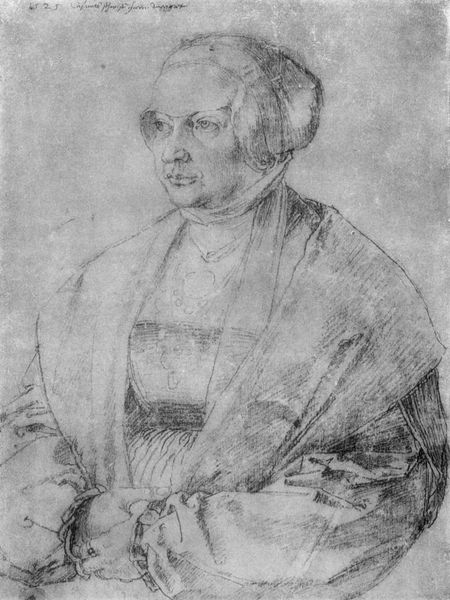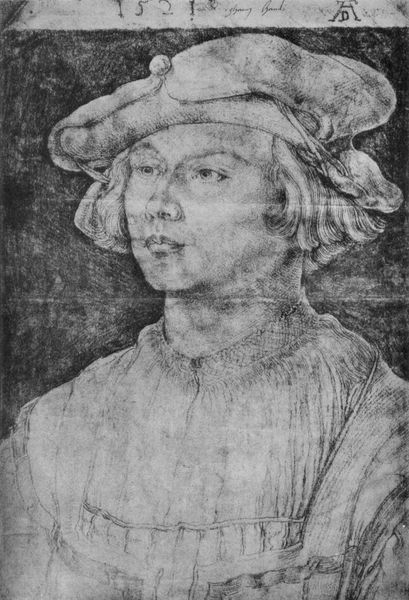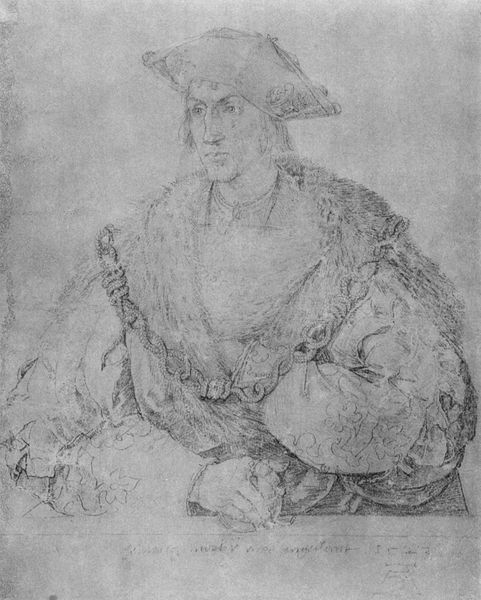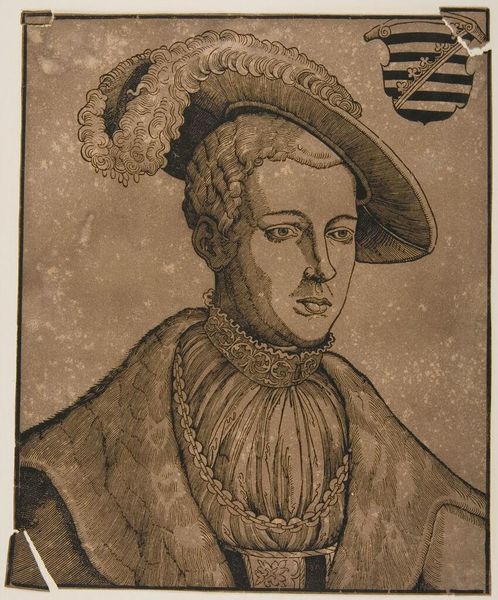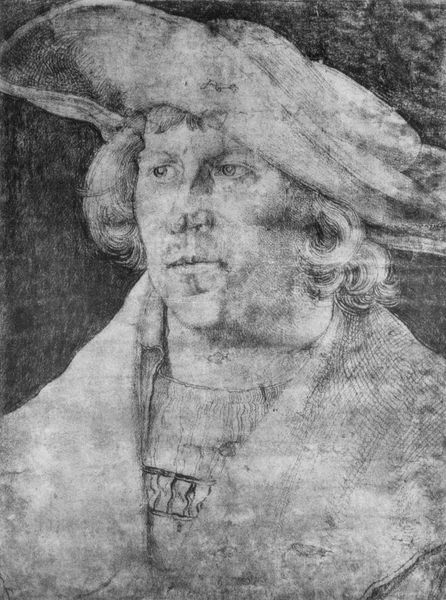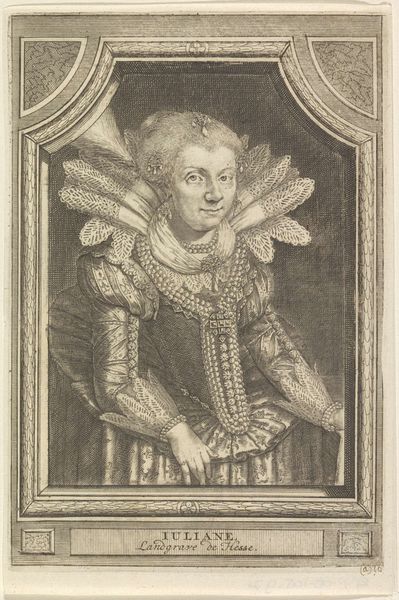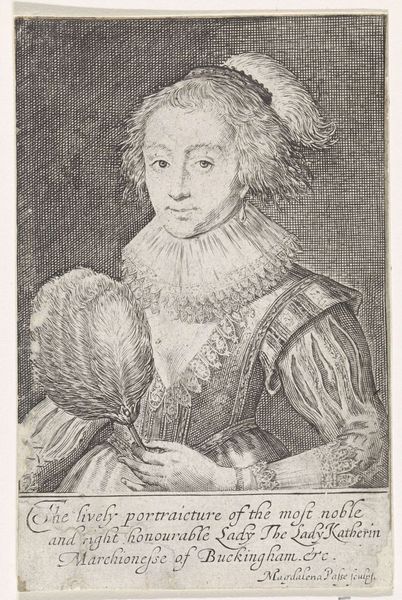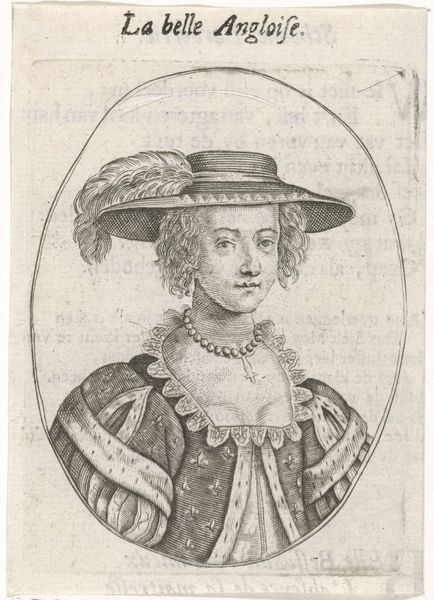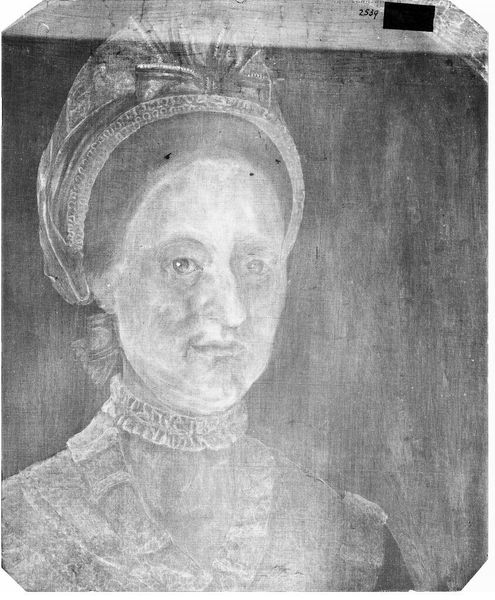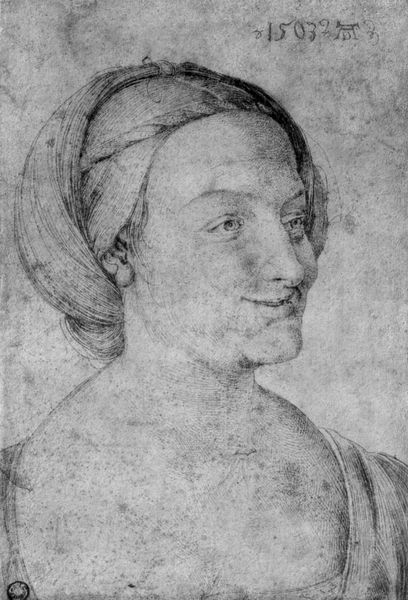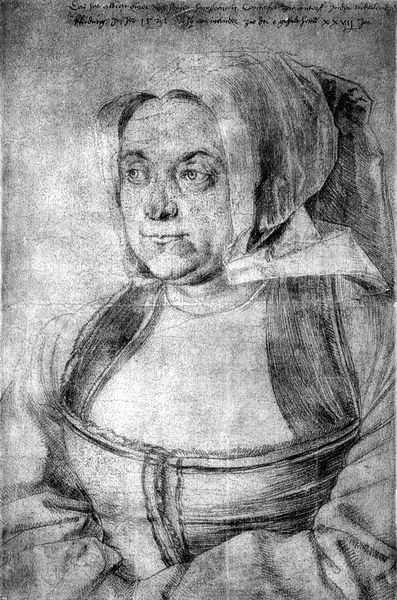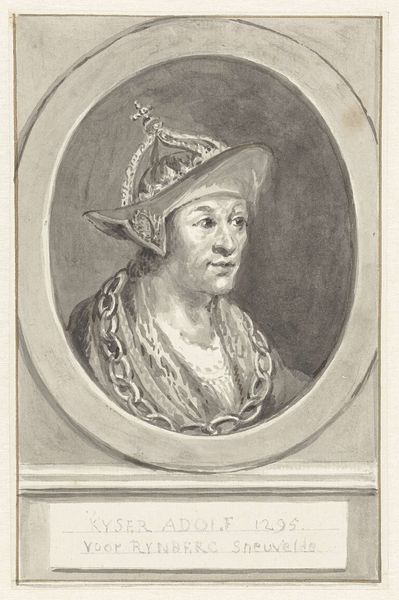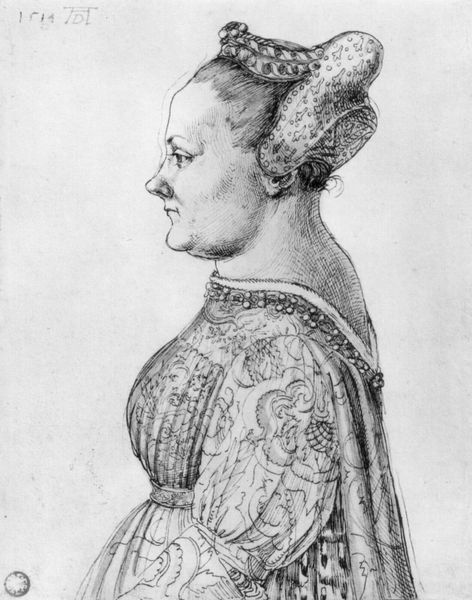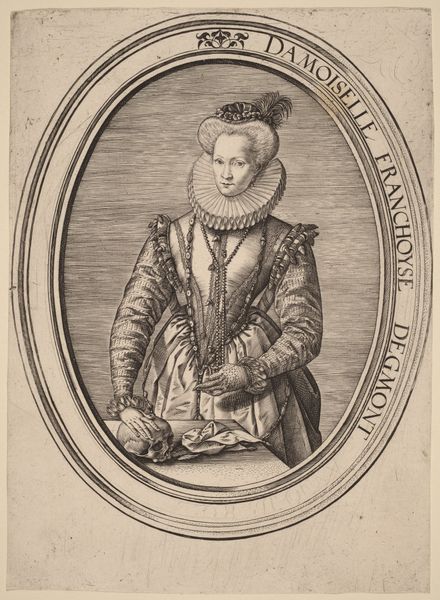
drawing, pencil
#
portrait
#
drawing
#
pencil sketch
#
charcoal drawing
#
figuration
#
11_renaissance
#
pencil drawing
#
sketch
#
pencil
#
northern-renaissance
Copyright: Public domain
Curator: Welcome. Before us is Albrecht Durer's sketch, titled "Portrait of Susanne von Brandenburg Ansbach." Crafted in pencil, it’s a fascinating glimpse into Renaissance portraiture and societal status. What strikes you most about it? Editor: The immediate sense I get is one of restrained elegance, primarily communicated through the linework. The soft shading creates volume but doesn't distract from the details like the intricate pleats of her sleeves or the delicate chain. Curator: Indeed, the rendering of details is significant. Portraits like this were crucial in conveying social standing. Susanne's attire, particularly that elaborate hat and her jewelry, speaks volumes about her position in society. It wasn't just about capturing a likeness, but about displaying wealth and status. Editor: And yet, there is a peculiar flattening of affect. While the lines describing her garments are precise, those detailing her face seem softened, even somewhat abstracted. I find her gaze elusive; the light renders an ambiguous psychological depth to the piece. Curator: It is a duality, isn't it? There’s the public face, the statement of rank through clothing, carefully observed and recorded. But perhaps there’s also a subtle attempt to hint at the individual behind the finery. Do you notice the little dog she is holding? This type of detail reveals more intimate considerations, connecting the persona with affection and domesticity. Editor: An interesting juxtaposition. The precise details describing the woman's adornments contrast rather starkly with the soft rendering of the small animal in her arms, as if love and the human touch may lie beyond social posturing. The dog almost disappears within the contours of her sleeves and it’s interesting the extent to which she, conversely, dominates the frame. Curator: Right. It really invites reflection on the complex roles women played in that period – both figureheads and individuals. How power could both enable and constrain. Editor: I think it’s also significant, aesthetically, how Durer coaxes an abundance of detail and form from the very spare language of pencil on paper. There’s a deceptive simplicity at play. It has provided some fruitful thoughts about what details and the level of observation really communicate. Curator: And for me, this highlights that tension between artistic skill and its role in shaping historical narratives. Thanks for helping us delve a bit deeper into this intriguing piece.
Comments
No comments
Be the first to comment and join the conversation on the ultimate creative platform.
